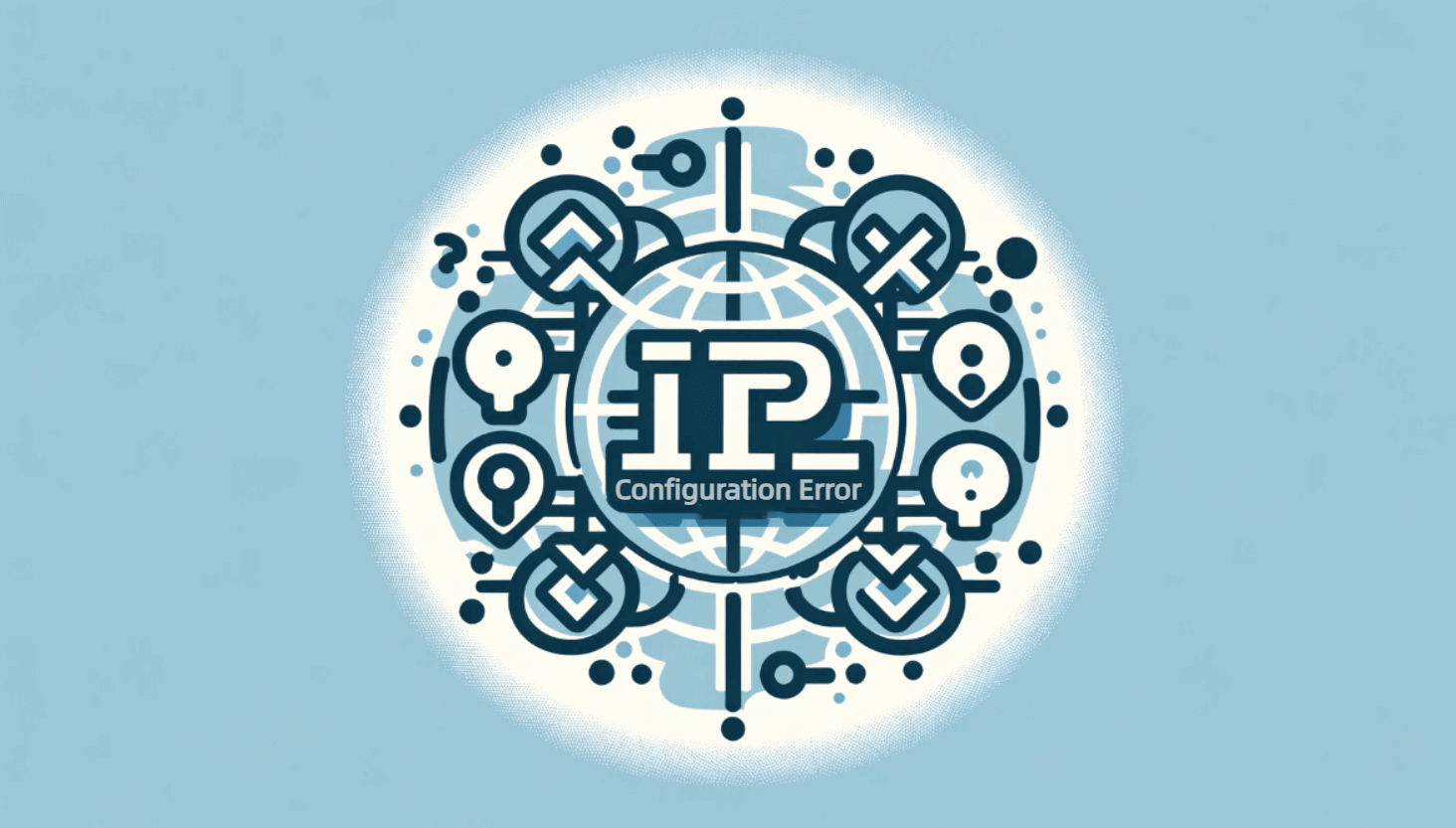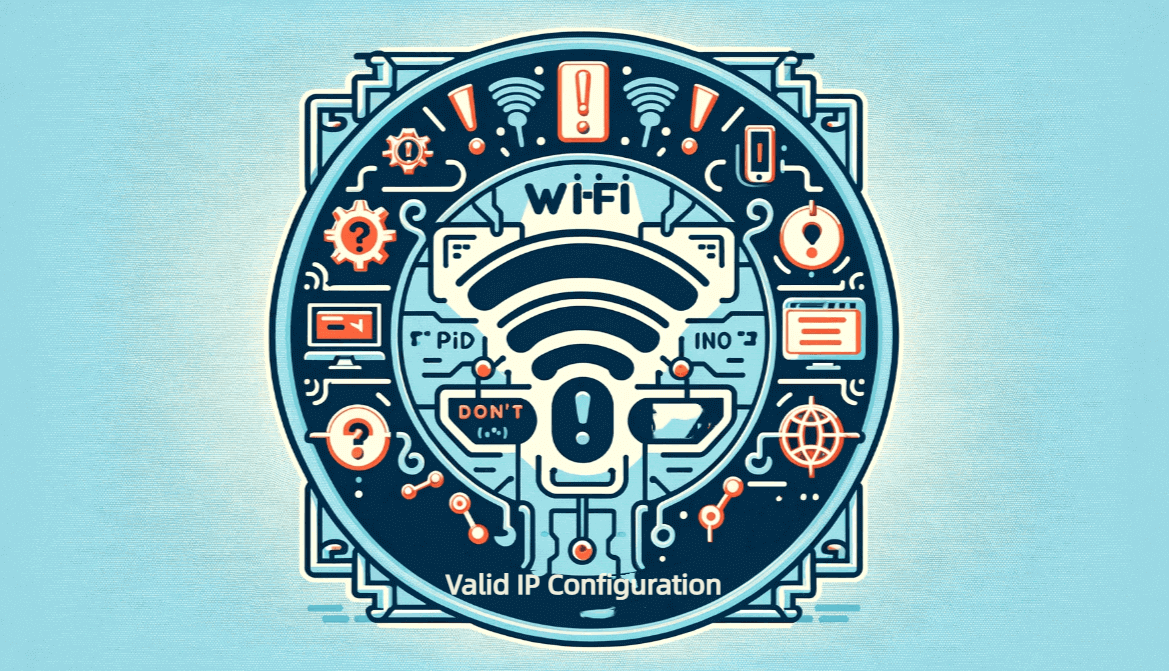WiFi Doesn't Have Valid IP Configuration: How to Fix It

Every day, billions of people take use of the ease that comes with Wi-Fi technology. On Windows 10, for example, some users have problems like the "Wi-Fi doesn't have a valid IP configuration." Fortunately, there are several methods available to address this issue. In this article, we'll explore the root problem, how to resolve this error message, and how to properly connect to the internet.
What is the “Wi-Fi doesn’t have a valid IP configuration” error?
Your computer is having trouble obtaining an IP address from your Wi-Fi if you are seeing the "Wi-Fi doesn't have a valid IP configuration" warning. It is analogous to your phone not receiving a signal. There are several possible causes for this issue, including issues with your computer's settings, your Wi-Fi router, or a snag in the way your network distributes IP numbers.
What causes the “Wi-Fi doesn’t have a valid IP configuration” error?
Although the "Wi-Fi doesn't have a valid IP configuration" error might be very perplexing, there are a few frequent problems that typically cause it. The following list includes several possible causes of the issue "Wi-Fi doesn't have a valid IP configuration":
- Router Glitches: Occasionally, your router may experience some confusion and be unable to properly give an IP address to your device. It appears as though your device and the router are temporarily speaking different languages.
- Incorrect Network Settings: This error may occur if your device's network settings are incorrect, such as having a static IP address when it should be dynamic. It seems like you're attempting to unlock a door with the incorrect key.
- Outdated or Corrupted Network Drivers: Drivers function as intermediaries between the hardware and your device. Errors such as this arise when communication channels are outdated or compromised.
- DHCP Issues: DHCP assigns IP addresses, acting as your network's postal service. Your device won't obtain the IP address required for a successful network connection if there are issues with either your router or device.
- Operating System Glitches: Occasionally, the OS itself is the issue. This annoying message might be caused by a system mistake or an upgrade gone wrong that messes with your network settings.

Knowing these reasons might make troubleshooting easier for you and help you concentrate your efforts in the right places to ensure a seamless return to the internet.
How do I fix Wi-Fi not having a valid IP configuration?
Fixing "Wi-Fi doesn't have a valid IP configuration" can be a hassle, but here are six detailed ways to tackle it:
1. Restart Your Router and Device
Technology just needs a vacation sometimes. Restarting your computer, phone, and router will allow your network connection to be restored. It's like to starting again with your gadgets.
2. Manually Set Your IP Address
Occasionally, you may get around the problem by manually changing your IP address in the network settings of your device. This method is a little more complex and entails selecting the appropriate subnet mask, default gateway, and IP address that is inside the range of your network.
3. Update Network Adapter Drivers
Many issues might arise from outdated drivers. Locate your network adapter in the Device Manager on your PC, then right-click and choose "Update driver." Any kinks that are resulting in the IP setup problem can be worked out by it.
4. Release and Renew IP Address
Enter ipconfig /release and ipconfig /renew at the Command Prompt after opening it. By doing this, your computer will be told to surrender its IP address and ask the router for a new one, thus restarting your connection.

5. Enable DHCP
Verify that your device has the Dynamic Host Configuration Protocol (DHCP) enabled. DHCP can fix issues with IP settings and dynamically allocate IP addresses. Usually, your device's network settings have this setting.
6. Disable Fast Startup in Windows
Windows' Fast Startup occasionally tampers with your network configuration. You can potentially resolve the IP configuration issue by making sure your network settings are completely reset upon starting by disabling it via the Control Panel's Power Options section.
Every one of these techniques—from the easy reboot to the more sophisticated ones like changing the IP manually or updating drivers—has a justification. Attempting these fixes will frequently help you find a solution, albeit the best one may depend on your unique circumstances.
How do I fix DHCP is not enabled for Wi-Fi?
If all of the fixes have failed and your Wi-Fi is still uncooperative, it may be necessary to make sure that DHCP is enabled. Your router distributes IP addresses via DHCP. Your devices won't be able to connect if it's turned off. The procedures may differ depending on the kind of router you have, however you can locate this setting in the menu of your router.
What if none of these solutions work?
Whether you have tried all of the methods listed above and nothing works, you may need to go into your network settings and see whether your computer is configured to automatically detect IP addresses; this is typically the best course of action. If these instructions seem confusing, it might be worthwhile to get a step-by-step manual or enlist the assistance of a tech-savvy friend.
Nevertheless, if everything else fails and you're still focusing on that mistake, it might indicate a more serious issue. Your best option at this stage could be to get in touch with your internet provider or someone who is more tech-savvy. They are able to investigate the problem more thoroughly and restore your Wi-Fi.
